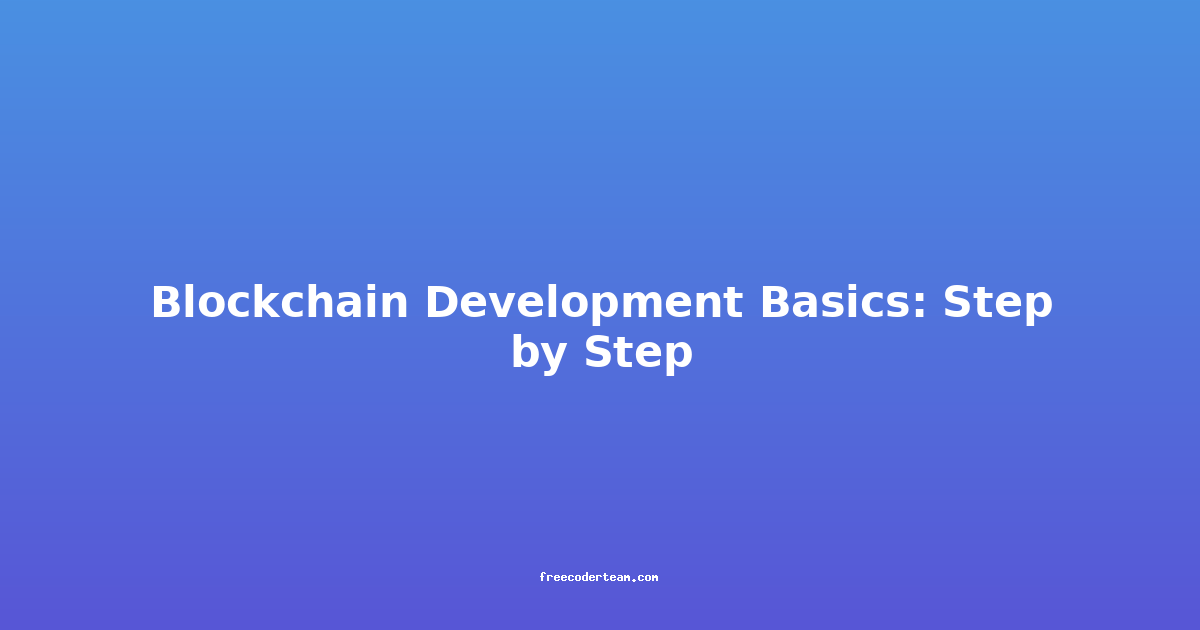Complete Guide to Test-Driven Development (TDD) in 2025
Test-Driven Development (TDD) is a software development methodology that emphasizes writing tests before writing the actual code. This approach ensures that the code is robust, maintainable, and aligned with the requirements from the very beginning. In 2025, as software complexity continues to grow and the demand for high-quality, reliable applications increases, TDD remains a cornerstone of modern software engineering. This guide will walk you through the principles, best practices, and practical examples of TDD, ensuring you can implement it effectively in your projects.
What is Test-Driven Development (TDD)?
TDD is a cyclical approach to software development where developers write tests first, then write the minimum amount of code necessary to pass those tests. The process is iterative, and the cycle repeats until the software meets all requirements. The core mantra of TDD is:
- Write a failing test – Ensure the test fails because the functionality doesn’t exist yet.
- Write the minimum code to pass the test – Focus on making the test pass without over-engineering.
- Refactor the code – Clean up the code while ensuring the tests still pass.
This cycle is often summarized as Red, Green, Refactor:
- Red: The test fails because the functionality isn’t implemented.
- Green: The test passes after writing the minimal code.
- Refactor: Improve the code structure without changing its behavior.
Why Use TDD in 2025?
In the rapidly evolving tech landscape of 2025, TDD offers several advantages:
- Improved Code Quality: TDD ensures that your code is thoroughly tested, reducing bugs and increasing reliability.
- Faster Feedback: By writing tests first, you catch issues early, saving time and effort in debugging.
- Clear Requirements: Writing tests forces you to think through the requirements and edge cases upfront.
- Easier Maintenance: TDD leads to modular, well-structured code, making it easier to maintain and extend.
- Documentation: Tests serve as living documentation, making it easier for new team members to understand the codebase.
TDD Best Practices
To maximize the benefits of TDD, follow these best practices:
1. Start with the Smallest Testable Unit
Begin by writing tests for the smallest, most atomic functionality. This ensures that you build a solid foundation before moving to more complex features.
2. Focus on Behavior, Not Implementation
Write tests that describe the behavior of the code rather than its implementation details. This approach makes your tests more resilient to changes in the underlying code.
3. Keep Tests Independent
Each test should be isolated and not depend on the outcome of other tests. This ensures that failures are easy to diagnose and fix.
4. Use a Testing Framework
Leverage testing frameworks like JUnit for Java, pytest for Python, Jest for JavaScript, or RSpec for Ruby. These tools provide robust features for writing and running tests efficiently.
5. Refactor Aggressively
Refactoring is a critical part of TDD. Continuously improve the code structure while ensuring that all tests still pass. This keeps the codebase clean and maintainable.
6. Automate Test Runs
Integrate your tests into your build pipeline using tools like GitHub Actions, Jenkins, or GitLab CI/CD. This ensures that tests are run automatically with every code change, catching regressions early.
7. Write Tests for Edge Cases
Don’t overlook edge cases. They are often the source of bugs and can significantly impact the reliability of your software.
8. Maintain a Balanced Test Suite
Aim for a mix of unit tests, integration tests, and end-to-end tests. This ensures comprehensive coverage without over-testing.
Practical Example: Implementing a Calculator with TDD
Let’s walk through a simple example of implementing a basic calculator using TDD in Python.
Step 1: Write the First Test
We’ll start by writing a test for the add function, which should add two numbers.
# test_calculator.py
import unittest
from calculator import Calculator
class TestCalculator(unittest.TestCase):
def test_add(self):
# Arrange
calculator = Calculator()
a = 5
b = 3
# Act
result = calculator.add(a, b)
# Assert
self.assertEqual(result, 8)
if __name__ == '__main__':
unittest.main()
Step 2: Write the Minimal Code to Pass the Test
Now, we’ll implement the add function in the Calculator class.
# calculator.py
class Calculator:
def add(self, a, b):
return a + b
Step 3: Run the Test
Run the test to ensure it passes:
python -m unittest test_calculator.py
Step 4: Refactor (if necessary)
In this case, the code is simple, so no refactoring is needed. However, as the codebase grows, refactoring becomes crucial.
Step 5: Add More Tests
Next, we’ll add tests for other operations like subtraction, multiplication, and division.
# test_calculator.py
import unittest
from calculator import Calculator
class TestCalculator(unittest.TestCase):
def test_add(self):
calculator = Calculator()
self.assertEqual(calculator.add(5, 3), 8)
def test_subtract(self):
calculator = Calculator()
self.assertEqual(calculator.subtract(5, 3), 2)
def test_multiply(self):
calculator = Calculator()
self.assertEqual(calculator.multiply(5, 3), 15)
def test_divide(self):
calculator = Calculator()
self.assertEqual(calculator.divide(6, 3), 2)
if __name__ == '__main__':
unittest.main()
Step 6: Implement the Remaining Functions
Now, implement the subtract, multiply, and divide methods.
# calculator.py
class Calculator:
def add(self, a, b):
return a + b
def subtract(self, a, b):
return a - b
def multiply(self, a, b):
return a * b
def divide(self, a, b):
if b == 0:
raise ValueError("Cannot divide by zero")
return a / b
Step 7: Handle Edge Cases
Add tests for edge cases, such as division by zero.
# test_calculator.py
import unittest
from calculator import Calculator
class TestCalculator(unittest.TestCase):
def test_divide_by_zero(self):
calculator = Calculator()
with self.assertRaises(ValueError):
calculator.divide(5, 0)
# calculator.py
class Calculator:
def divide(self, a, b):
if b == 0:
raise ValueError("Cannot divide by zero")
return a / b
Tools and Technologies for TDD in 2025
In 2025, several tools and technologies can enhance your TDD workflow:
1. Testing Frameworks
- Python: pytest, unittest
- JavaScript: Jest, Mocha
- Java: JUnit, TestNG
- Ruby: RSpec, MiniTest
2. Mocking Libraries
- Python: pytest-mock, unittest.mock
- JavaScript: Jest Mock, Sinon.js
- Java: Mockito
- Ruby: RSpec Mocks
3. CI/CD Integration
- GitHub Actions: Automate test runs on every commit.
- Jenkins: Build and test pipelines.
- GitLab CI/CD: Integrated CI/CD for GitLab projects.
4. Code Coverage Tools
- Python: Coverage.py
- JavaScript: Istanbul, Jest Coverage
- Java: JaCoCo
- Ruby: SimpleCov
Common Pitfalls to Avoid
While TDD is highly beneficial, it’s essential to avoid these common pitfalls:
- Over-testing: Writing too many tests can be counterproductive. Focus on critical functionality and edge cases.
- Slow Tests: Avoid writing tests that take too long to run. Optimize test execution time.
- Test Fragility: Ensure tests are robust and not overly dependent on implementation details.
- Ignoring Refactoring: Refactoring is a key part of TDD. Neglecting it can lead to messy code.
- Test-Only Mentality: Don’t forget to write production code. Tests are a means to an end, not the end itself.
Conclusion
Test-Driven Development is a powerful methodology that ensures high-quality, maintainable software. By following the principles of TDD and leveraging modern tools, developers can build robust applications efficiently. In 2025, as software complexity continues to rise, TDD remains a vital practice for delivering reliable and scalable solutions.
Remember, the key to successful TDD is consistency. Start small, write tests first, and continuously refine your code. With practice, TDD will become an integral part of your development workflow, leading to better code and happier clients.
Resources for Further Learning:
By embracing TDD, you’ll not only improve your software quality but also enhance your problem-solving skills and become a more effective developer. Happy coding! 🚀
Note: The examples provided are simplified for clarity. In real-world scenarios, TDD is applied to complex systems, and the principles remain the same.




